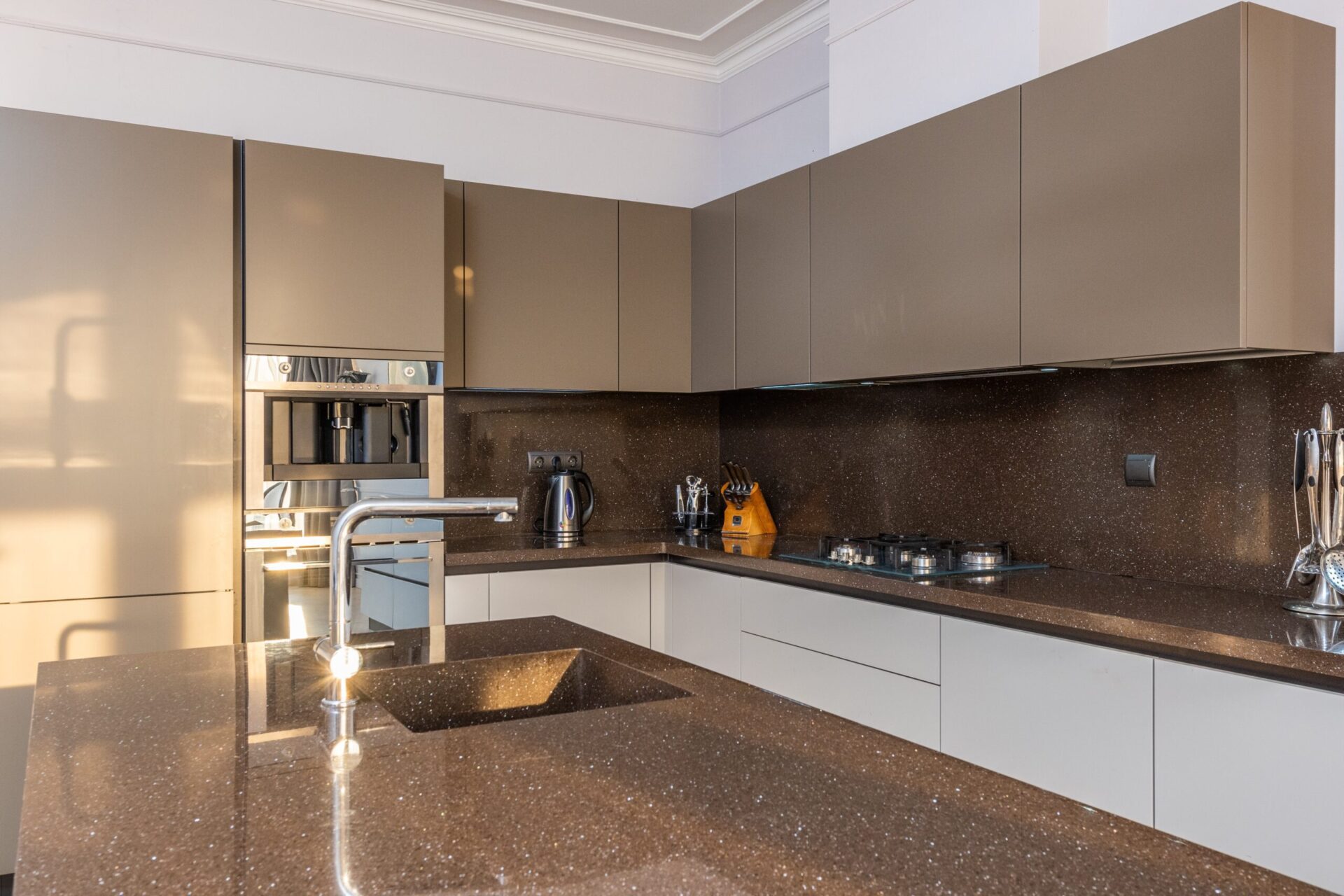Introduction
The kitchen sink is arguably one of the most used fixtures in any household. It is here that we wash our fruits and vegetables, clean our dishes, and even occasionally fill up a mop bucket. But it’s more than just a practical necessity.
This guide aims to simplify your decision-making process, helping you choose a sink that fits your needs and aesthetic preferences.
Understanding Your Sink Needs
Before delving into the various sink styles and materials, it’s important to understand your unique requirements. Your sink usage habits, the size of your kitchen, the type of countertop you have, and your kitchen’s overall decor will significantly influence the type of sink that suits you best. If you frequently wash large pots or pans, for instance, a deeper sink might be ideal for you. Similarly, if you have a small kitchen, a single bowl sink might be more appropriate than a double bowl option to save space.
The right kitchen sink can serve as a stylish centrepiece that pulls your entire kitchen decor together. With various styles, materials, and features to choose from, finding the perfect kitchen sink can be an overwhelming task.
Kitchen Sinks: Buying Guide
Content:
-Understanding Your Sink Needs -Sink Styles Top-mount Sinks Undermount Sinks Farmhouse Sinks -Material Considerations Stainless Steel Fireclay Cast Iron -Choosing the Right Size and Configuration -Price and Budgeting -Extra Features -Installation and Maintenance -Conclusion
Sink Styles
In the world of kitchen sinks, there are three primary styles you’ll encounter: top-mount, undermount, and farmhouse. Each of these styles has its unique aesthetic appeal and functional benefits.
Top-mount Sinks
Also known as drop-in sinks, top-mount sinks are the most common type of kitchen sink available. They are easy to install as they drop into a hole cut out of the countertop, with the lip of the sink resting on the countertop’s surface. This style is highly versatile and compatible with almost any type of countertop material. For more on top-mount sinks, visit this page.
Undermount Sinks
Undermount sinks offer a seamless look as they are installed beneath the countertop. This allows for easy cleanup as crumbs and debris can be swept directly into the sink without getting caught on the lip. However, they require solid countertop materials like granite or quartz, as these materials can support the sink’s weight.
Farmhouse Sinks
Farmhouse sinks, also known as apron-front sinks, protrude slightly from the surrounding cabinets, allowing for a deep and wide basin. This style is not just functional, but also provides a charming, rustic look to the kitchen.
Material Considerations
The material of your sink determines its durability, maintenance, and aesthetic appeal. The most common materials include stainless steel, fireclay, and cast iron.
Stainless Steel
Stainless steel sinks are a popular choice due to their durability and versatility. They can withstand heavy usage without chipping or cracking and are resistant to heat and stains. Moreover, they are available in various finishes and fit seamlessly into modern kitchen designs. To explore more about stainless steel options, visit this page.
Fireclay
Fireclay sinks are made from clay moulded at high temperatures, resulting in a hard, durable surface. They are resistant to scratches, stains, and heat. Despite their durability, they offer an elegant, timeless look that can complement any kitchen decor.
Cast Iron
Cast iron sinks are coated with a heavy porcelain enamel, resulting in a glossy, sleek finish. They are highly durable and resistant to scratches and stains. They can retain heat well, which is a bonus when washing dishes. However, they are relatively heavy, requiring strong countertop and cabinet support.
Choosing the Right Size and Configuration
Kitchen sinks come in a variety of sizes and configurations. Single bowl sinks are great for smaller kitchens, while double bowl sinks offer separate areas for washing and rinsing. There’s also the option of a 1.5 bowl sink, which offers a smaller secondary bowl that can be used for food preparation or draining. Your choice here largely depends on your usage patterns and the available space in your kitchen.
Price and Budgeting
Kitchen sinks vary significantly in price, depending on the material, size, style, and brand. It’s crucial to have a clear idea of your budget before you start shopping. Remember, the cost of the sink is not the only expense; there might be additional costs for installation, especially if you’re opting for an undermount or farmhouse sink.
Extra Features
Modern kitchen sinks come with a host of additional features like built-in drainboards, prep sinks, and soap dispensers, among others. Some sinks also come with sound-absorbing pads on the underside to reduce noise when washing dishes.
Installation and Maintenance
Each type of kitchen sink requires a different installation process. While top-mount sinks are relatively easy to install, undermount and farmhouse sinks might need professional installation.
In terms of maintenance, some materials like stainless steel are relatively low-maintenance, while others like cast iron might require regular upkeep to prevent staining and chipping.
Conclusion
The kitchen sink is a fundamental component of your kitchen. It’s not just about functionality; it’s also about enhancing your kitchen’s overall look and feel. By understanding your needs and knowing the different styles, materials, and features available, you can make an informed choice that you’ll be satisfied with for years to come.
Frequently Asked Questions
1. What is the most durable material for a kitchen sink?
Stainless steel and fireclay are often considered the most durable materials for a kitchen sink.
2. What is the best way to clean a kitchen sink?
This largely depends on the material of your sink. However, most sinks can be cleaned effectively with a gentle dish soap and soft cloth. For stubborn stains, baking soda and vinegar can be used.
3. How often should I replace my kitchen sink?
With the right care and maintenance, a quality kitchen sink can last anywhere between 15 to 30 years or even longer. Factors such as the sink’s material, usage, and maintenance will influence its lifespan.
4. What’s the difference between top-mount and undermount sinks?
Top-mount sinks are installed from above the countertop with their lip resting on the surface, while undermount sinks are installed beneath the countertop, offering a seamless look.
5. Is a farmhouse sink a good option for my small kitchen?
While farmhouse sinks offer a deep and wide basin, they can take up significant cabinet space below. It’s important to consider your kitchen size and cabinet space before choosing a farmhouse sink.


